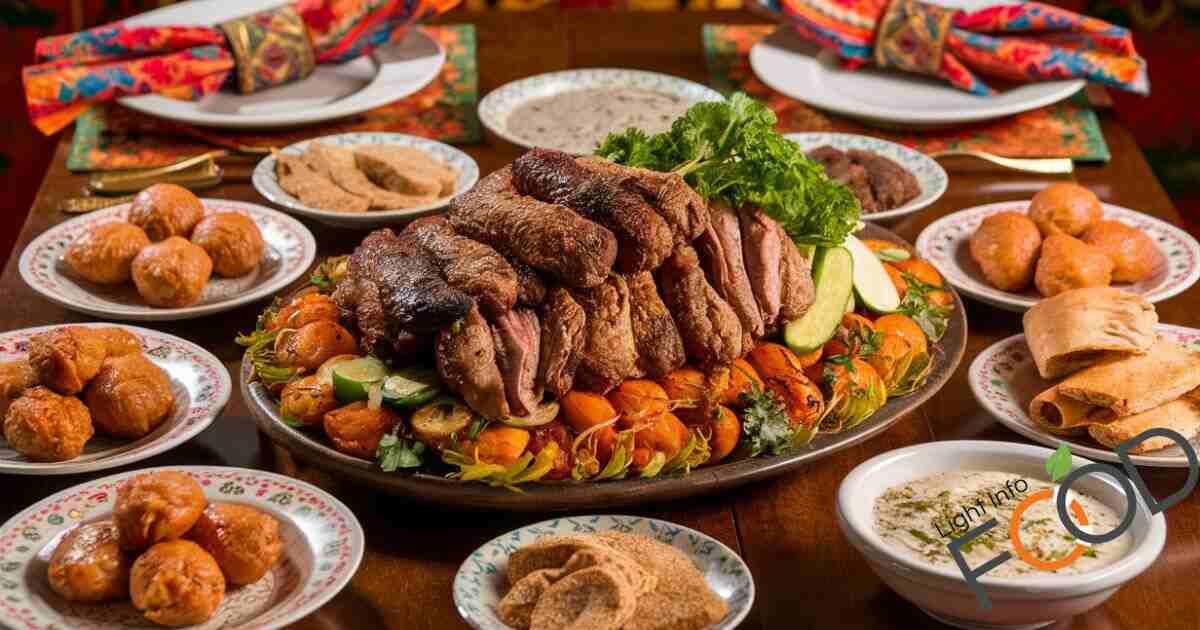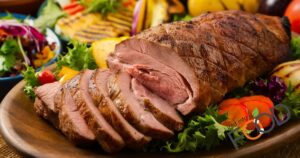According to the search results, traditional Armenian cuisine is a reflection of the country’s complex history and geography. Some key points about traditional Armenian food:
Armenian food traditions were formed over thousands of years in the fertile Armenian Highlands, which was well-suited for growing staple ingredients like wheat, lentils, apricots, figs, and pomegranates.
However, Armenia’s strategic location made it a prime place for conflict between warring empires, which led to waves of immigration that further altered Armenian cuisine.
As a result, the definition of traditional Armenian food can vary depending on who you ask and where they are from.
Some dishes considered quintessentially Armenian, like choreg (Armenian Easter bread), are virtually unknown in Armenia itself but beloved in the Armenian diaspora.
Some of the most iconic traditional Armenian dishes include:
- Khorovats – Grilled meat, often lamb
- Dolma – Stuffed grape leaves or vegetables
- Harissa – A thick porridge made from wheat and meat
- Kyufta/Kufta – Meatballs
- Manti – Dumplings
- Ghapama – Baked stuffed pumpkin
- Gata – Sweet bread
Fresh herbs, yogurt, and lavash (flatbread) are also staples in traditional Armenian cuisine.
The flavors are often dictated by the quality and freshness of the ingredients rather than heavy seasoning.
Overall, Armenian food reflects the country’s diverse history and geography, with influences from various cultures that have passed through the region over the centuries.
What Is Armenian Food?
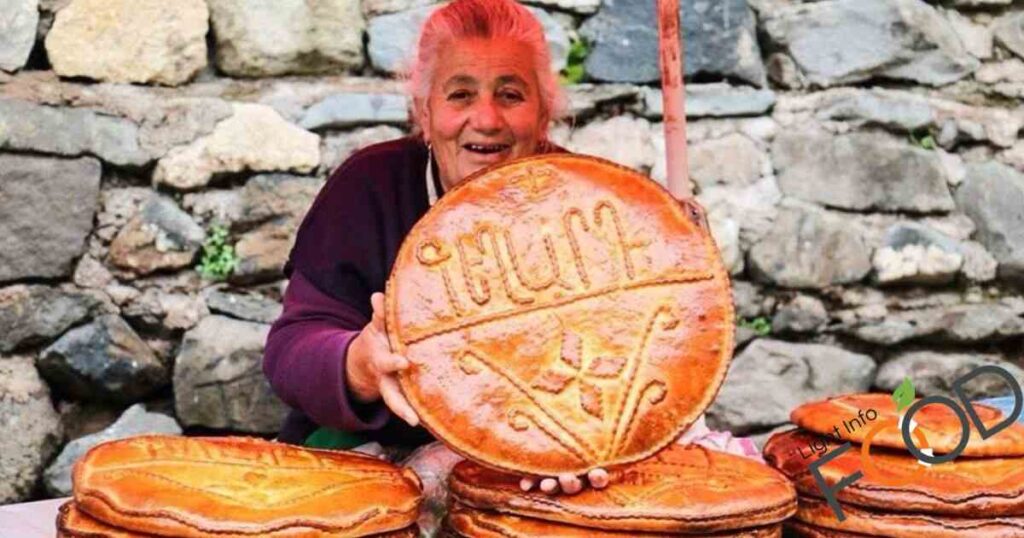
Armenian cuisine is a reflection of the country’s history and geography. Staple ingredients include lamb, eggplant, yogurt, lavash (flatbread), and bulgur (cracked wheat), which is traditionally preferred over rice or maize.
The definition of traditional Armenian food is often debated, as Armenia’s “complicated history of wars, genocide, kingdoms, and conquerors” has led to waves of immigration that have altered the cuisine over time.
However, Armenian food traditions were formed over thousands of years in the fertile Armenian Highlands region, which was well-suited for growing wheat, lentils, apricots, figs, and pomegranates.
Some key traditional Armenian dishes include:
- Khorovats – A type of barbecued meat, often beef, chicken or pork
- Dolma – Grape leaves or vegetables stuffed with a mixture of meat, rice, onions and herbs
- Manti – Dumplings filled with meat and onions
- Gata – A sweet pastry with flour, sugar, butter and nut filling
- Pilaf – A rice dish cooked in broth with vegetables or meat
- Lule Kebab – Skewered minced meat kebabs
Fresh herbs, nuts, legumes, and a variety of fresh and dried fruits are also widely used in traditional Armenian cuisine.
What Are The Ingredients Of Dolma?
The main ingredients for making dolma (stuffed grape leaves) are:
- Grape leaves – Fresh or jarred grape leaves are used to wrap the filling.
- Ground meat – Typically ground beef or lamb is used in the filling. Some recipes use a combination of beef and lamb or substitute ground turkey.
- Rice – Short or medium grain rice is commonly used in the filling. The rice is partially cooked before stuffing.
- Onions – Finely diced onions are sautéed and added to the filling.
- Herbs – Fresh herbs like cilantro, basil, and mint are often included in the filling.
- Spices – Common spices used include cumin, salt, and pepper. Some recipes also use allspice, coriander, cinnamon, or paprika.
- Lemon juice – A bit of lemon juice is sometimes added to the filling or used to cook the dolma.
- Olive oil or butter – Used to sauté the onions and cook the dolma.
Some variations include adding ingredients like pine nuts and dried currants or substituting some of the meat with vegetables for a vegetarian version.
What Is The History Of Armenian Cuisine?
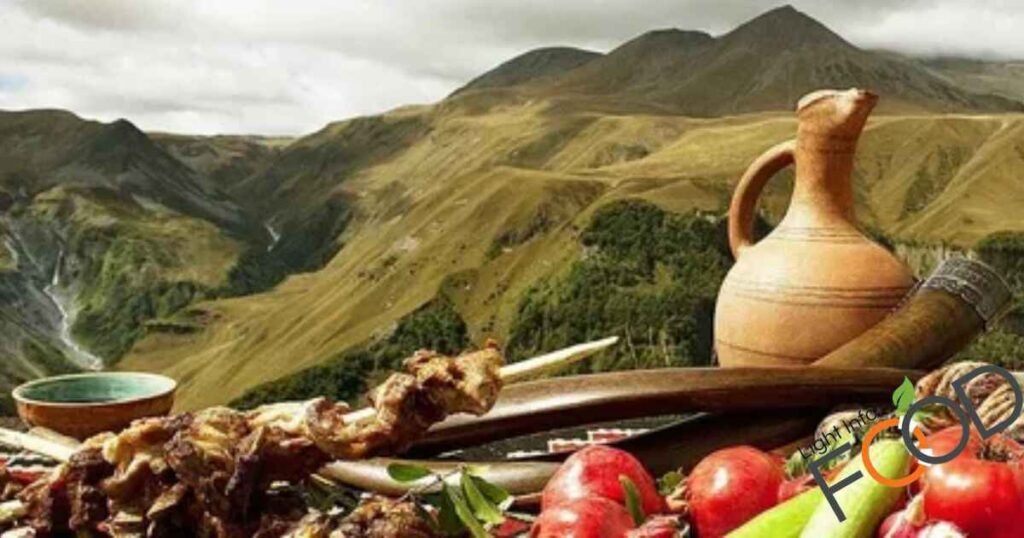
Armenian cuisine has a rich and ancient history that dates back over 2000 years. It originated in the Armenian highlands, characterized by well-developed stock raising, agriculture, and the use of grains, vegetables, and herbs.
The cuisine evolved from the Kingdom of Van era, where Armenians were engaged in agriculture and Soft Foods processing. Over the centuries, Armenian cuisine has been passed down through generations, with recipes changing but the essence of Armenian flavors remains constant.
The cuisine is diverse, unique, and influenced by the region’s fertile geography, which allowed for the cultivation of wheat, rice, lentils, figs, pistachios, and apricots. Armenian cuisine is known for its extensive use of meat and dairy products, herbs, and spices, with dishes like hash, dolma, khorovats, and lavash stapling. The cuisine also reflects the cultural diversity of the region, influenced by various empires and neighboring countries.
Today, Armenian cuisine continues to evolve, with different regions and families having their unique recipes and variations, making it a vibrant and integral part of Armenian culture and identity
What Are Some Vegetarian Options In Armenian Cuisine?
In Armenian cuisine, there are several delicious vegetarian options available. Some popular vegetarian dishes include:
- Arishta: A traditional Armenian homemade noodle that is vegetarian (noodle contains egg) and can be mixed with salads and other dishes.
- Spas: A popular soup in Armenia made with yogurt, wheat berries, flour, egg, and sour cream, which can be served hot in winter and cold in summer.
- Tolma: A dish that has vegetarian variations like ‘pasouts tolma’ (Lenten dolma), which is a mix of beans and grains wrapped in vine or cabbage leaves.
- Jengyalov Hac: A flatbread stuffed with dozens of green herbs, making it a vegetarian delight.
- Edible Herbs: Dishes made of various herbs and plants collected in the mountains and meadows are very popular among Armenians, offering a variety of vegetarian options.
These dishes showcase the rich and diverse vegetarian offerings within Armenian cuisine, providing a flavorful experience for those seeking meat-free options.
Armenian National Cuisine

Armenian national cuisine is deeply rooted in history, dating back about 2000 years. It is characterized by a rich variety of meat and dairy products, grains, vegetables, and herbs. Traditional Armenian dishes include soups like spas and khash, meat dishes such as khorovats (barbecue) and dolma, fish dishes like Fishman (trout), and bread like lavash.
Additionally, Armenian cuisine offers sweet treats like gata and sujuk, along with refreshing dairy products like mats. The cuisine reflects the country’s hospitable culture, with banquet tables always full of diverse viands. Armenian cuisine is a blend of different tastes, spices, and ingredients, making it a must-try for any visitor to Armenia.
Traditional Armenian Cuisine
Traditional Armenian cuisine is a reflection of the country’s history and geography, shaped by thousands of years of influences and changes due to wars, genocide, and various conquerors.
Staples in the Armenian diet include lamb, eggplant, yogurt, and lavash, with bulgur being traditionally preferred over rice or maize. The cuisine features a variety of fresh and dried fruits like apricots, figs, and pomegranates, along with the use of fresh and dry herbs extensively. Armenian dishes are known for their special taste and spicy flavors, with meat dishes like khorovats (barbecue) being a significant part of Armenian tables.
Other popular dishes include tolma (dolma), hash (a hangover remedy soup), harissa (a chicken and wheat dish), lahmajoun (a thin dough topped with minced meat and vegetables), gata (a pastry symbolizing luck and success), and baklava (a layered pastry with walnuts and syrup). Armenian cuisine also includes a variety of traditional soups, salads, and desserts, showcasing a rich and diverse culinary heritage.
What Is Traditional Armenian Food
Traditional Armenian cuisine is a rich and flavorful culinary heritage that has been passed down through generations. Here’s a brief overview of some of the key elements of traditional Armenian food:
Staple Dishes
The foundation of traditional Armenian cuisine is built upon hearty, comforting dishes. Some of the most iconic Armenian staples include:
- Lavash – A thin, flatbread that is a dietary staple and often used to wrap other foods.
- Dolma – Grape leaves or vegetables stuffed with a savory rice and meat mixture.
- Khorovats – Grilled meats, often lamb or pork, that are a centerpiece of Armenian barbecues and celebrations.
- Harissa – A thick, porridge-like dish made from wheat and meat.
Flavors and Ingredients
Traditional Armenian cooking makes use of a variety of aromatic spices and fresh, locally sourced ingredients. Common flavors include:
- Garlic, onions, and herbs like basil, parsley, and cilantro
- Tart pomegranate, tangy yogurt, and rich, creamy cheeses
- Nuts like walnuts and almonds, as well as dried fruits
- Lamb, beef, and fish, often grilled or slow-cooked
The combination of these flavors and ingredients results in a unique and delicious cuisine that reflects Armenia’s diverse cultural heritage and agricultural bounty.
What Religion Is Armenia?

Armenia is known for its rich religious history. The majority of Armenians belong to the Armenian Apostolic Church, which is an Orthodox Christian denomination. Additionally, a small but notable number of Armenians are part of the Armenian branch of the Roman Catholic Church.
These religious affiliations have played a significant role in shaping Armenian culture and identity over the centuries. The Armenian Apostolic Church has been a central pillar of Armenian spirituality and has contributed to the preservation of Armenian traditions and values.
Armenia’s religious landscape reflects a deep connection to Christianity, with the Armenian Apostolic Church serving as a cornerstone of the country’s religious heritage.
This strong religious influence has not only shaped the spiritual beliefs of Armenians but has also influenced various aspects of Armenian culture, art, and literature. The presence of Christianity in Armenia has endured for centuries, highlighting the enduring importance of religion in the lives of the Armenian people.
Is Armenia Considered Arab?
Armenia is not considered Arab. Armenia is a country located in the South Caucasus region of Eurasia, while Arabs are an ethnic group primarily residing in the Arab world, which includes countries in the Middle East and North Africa. Armenians have their distinct culture, language, and history, separate from Arab identity.
The Armenian people have a unique heritage that is rooted in their ancient civilization and Christian faith, setting them apart from Arab communities in the region. Therefore, Armenia is not classified as an Arab country due to its distinct cultural and historical background.
Is Armenia A Healthy Country?
Armenia is not considered a particularly healthy country. The country faces several significant health challenges:
High out-of-pocket health expenditures: Armenia has low public health spending and high out-of-pocket costs for healthcare, which creates financial barriers to accessing care. This leads to a high incidence of catastrophic and impoverishing health expenditures, especially among the poorest households.
Aging population and chronic diseases: Armenia’s population is aging, with a growing proportion of elderly residents. This, combined with a high prevalence of chronic illnesses like hypertension, is putting increasing strain on the healthcare system.
Overall, while Armenia has made some progress in recent years, it continues to grapple with major public health issues that undermine the health and wellbeing of its citizens. Addressing the high costs of healthcare and the growing burden of chronic diseases will be critical to improving Armenia’s health outcomes.
What To Be Careful In Armenia?
When traveling to Armenia, it is important to be cautious and aware of your surroundings. While Armenia is generally safe for tourists, petty crime like pickpocketing can occur, especially in crowded places. It is advisable to keep your belongings secure and avoid overt displays of wealth.
Additionally, be mindful of local laws and customs, such as refraining from photographing sensitive areas like military sites or engaging in public displays of affection, especially for same-sex couples. In case of illness or injury, ensure you have access to adequate medical care, especially outside the capital city of Yerevan. Overall, staying informed, respecting local norms, and taking necessary precautions can help ensure a safe and enjoyable visit to Armenia.
Is Armenia Safe For Foreigners?
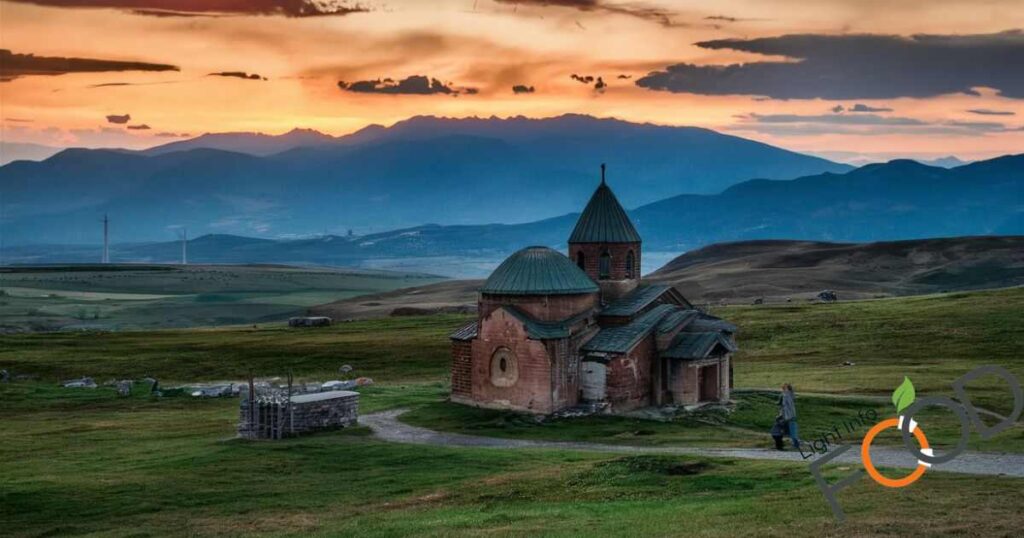
Armenia is generally considered a safe country for foreigners to visit. According to the search results, Armenia has a very low crime rate, and the locals are known to be helpful and welcoming towards tourists.
The search results state that “Armenia is one of the safest countries in the world with very low crime level” and that “especially in summer, you can find a lot of locals and tourists walking on the street till midnight.”
The article also notes that there are uniformed police officers present throughout the country, which can provide an added sense of security for visitors.
While no location is completely free of risk, the information provided suggests that Armenia is a relatively safe destination for foreign travelers. The search results paint a picture of a country with a friendly and safe environment, making it an appealing option for those looking to explore the country’s rich history, culture, and natural beauty.
FAQ’s
Is Armenian Food Similar To Lebanese Food?
Armenian and Lebanese foods share similarities due to historical interactions and regional influences. Both cuisines feature common ingredients like lamb, yogurt, eggplant, and bread. Additionally, they incorporate herbs, nuts, fruits, and spices in their dishes, creating flavorful and diverse culinary traditions.
What’s Armenia Famous For?
Armenia is known for its rich history and cultural heritage.
Some of the things Armenia is famous for include its ancient monasteries, such as the iconic Khor Virap and Geghard Monastery, which showcase the country’s deep Christian roots.
Armenia is also renowned for its stunning natural landscapes, including the volcanic Mount Ararat and the serene Lake Sevan.
Additionally, Armenia is celebrated for its vibrant arts and crafts, particularly its intricate khatchkars (cross-stones) and traditional carpet weaving.
Is Armenia A Rich Or Poor Country?
Armenia is a lower-middle-income country. While it has made progress in reducing poverty and improving living standards since gaining independence, Armenia still faces economic challenges such as high unemployment, income inequality, and reliance on remittances from citizens working abroad.
Conclusion
Armenian cuisine is a rich and flavorful culinary tradition that has been shaped by the country’s diverse history and geography. The food of Armenia is a delightful blend of Mediterranean, Middle Eastern, and Caucasian influences, resulting in a unique and satisfying dining experience.
One of the hallmarks of Armenian cuisine is the use of fresh, locally sourced ingredients. From the fragrant herbs and spices that season the dishes to the succulent meats and vegetables, every component of an Armenian meal is carefully selected and prepared with great attention to detail. Whether you’re enjoying a hearty stew, a savory kebab, or a delicate pastry, the flavors of Armenia are sure to delight your palate.
What are some of the most popular and iconic Armenian dishes that you would recommend trying?
